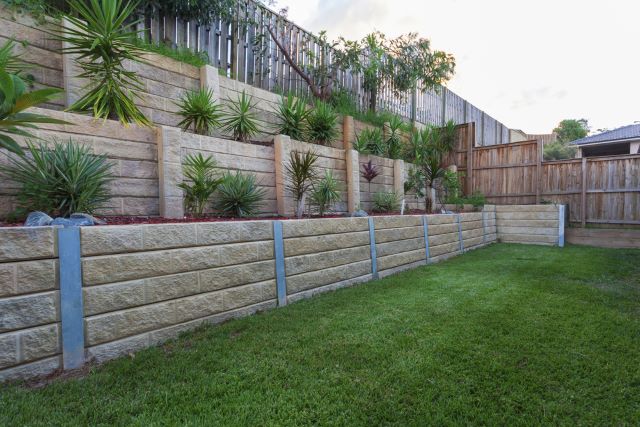A retaining wall is quite common when it comes to building homes; it is especially useful when there is a need to hold back soil when terracing a slope. The early retaining walls were built using stacked stones without any mortar to hold them together. The weight of stone was used instead of concrete to fit them together.
It is important to note that when building a retaining wall to retain the soil, it is vital to ensure that it can withstand the gravity and frost. This type of wall is environmentally friendly, more durable and looks like a better tool. This article goes on to provide vital tips on how to pick a retaining wall for your house and the benefits of using one. It is a must-read for those considering the option of a DIY retaining wall.
Tips to Pick the Best Retaining Wall
The primary benefit of opting for a retaining wall is to hold the soil behind it. Every project is likely to have a different requirement; for example, the requirement can be for small landscape stone walls surrounding a garden or an enormous soil retaining one along a highway. Listed here are several tips on how to pick a right dry retaining wall:
- A retaining wall can help reduce the level of maintenance and prevent erosion due to rain.
- It is necessary to have a detailed understanding of a property when choosing the location for a wall. The main reason for this is there can be important property lines either above or under the ground. There can also be stormwater drains or other features for water management like irrigation systems.
- In the case when there is a slope it is necessary to use additional infill for a site.
- If there is a hillside involved it is necessary to consider where all excess soil is to be stored.
- The wall-size needs to take several other factors into consideration like it can impede on natural drainage patterns and be damaging to the environment.
- For a boundary wall, it is necessary to verify that the wall or nanny reinforcement systems do not encroach over the property line.
Few More Tips to Remember
- For this type of wall, it is important to consider if there will be additional weight or vertical forces above the wall like fences, guardrails, driveways, parking lots, swimming pools.
- It is important to examine soil strength since it is necessary to support a wall. This is important to determine if it has necessary bearing capacity, right stress parameters and friction angle for a user.
- The base soil needs to be firm, solid, and strong and not moist. It is not a good idea to use wet soil since it can expand and contract and damage the wall. On the other hand, sandy soil allows for good drainage.
- It is necessary to calculate height of any corresponding walls, footprint sizes, slopes and setback angle.
- It is also essential to ensure that retaining walls have good drainage and that there is no buildup of water behind a wall. Thus, it is best to first grade a site for drainage patterns and construct a drainage system behind a wall; this will help minimize the amount of hydrostatic pressure any groundwater will create.
Benefits of using a Retaining Wall
There are many benefits of opting for a Strong lock retaining wall; one of the main reasons being that has a very good aesthetic value. Besides being very attractive in appearance it is also very useful and can add value to wherever it is installed. This type of wall is also highly durable and long-lasting and there are a wide range of choices to pick from.
{Other Images:10:full:center}Daniel Clark

